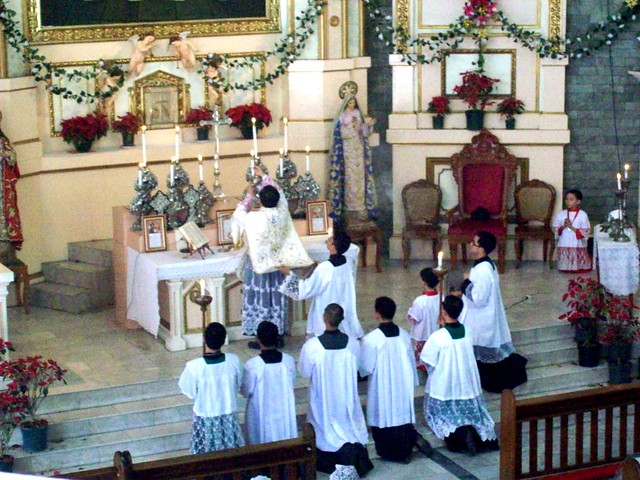[Bishop Tagle is now the archbishop-elect of Manila, but wait! what is an archbishop anyway? is he just a simple bishop with additional title "arch"?]
an archbishop is a bishop assigned in governing an ecclesiastical province eg. the Archdiocese of Manila. an ecclesiastical province is composed of different dioceses under the leadership of bishops.
prerogatives of archbishops are
* the right to wear the pallium, a symbol of communion with the Pope.
*precedence over other bishops in liturgical function.
*6 tassled capello romano use in the church heraldry.

According to the new code of canon law, an archbishop or metropolitan has the following functions:
Can. 436 §1. In the suffragan dioceses, a metropolitan is competent:
1/ to exercise vigilance so that the faith and ecclesiastical discipline are observed carefully and to inform the Roman Pontiff of abuses, if there are any;
2/ to conduct a canonical visitation for a cause previously approved by the Apostolic See if a suffragan has neglected it;
3/ to designate a diocesan administrator according to the norm of cann. ⇒ 421, §2, and ⇒ 425, §3.
§2. Where circumstances demand it, the Apostolic See can endow a metropolitan with special functions and power to be determined in particular law.
§3. The metropolitan has no other power of governance in the suffragan dioceses. He can perform sacred functions, however, as if he were a bishop in his own diocese in all churches, but he is first to inform the diocesan bishop if the church is the cathedral.
*** archbishops are the eyes of the Pope in the locality. He is like a supervisor, to his brother bishops, so that they may act as bishops.
so the expectation is higher to them, because they have greater responsibility and they are accountable to God as well.
Let us pray for our Archbishops!











